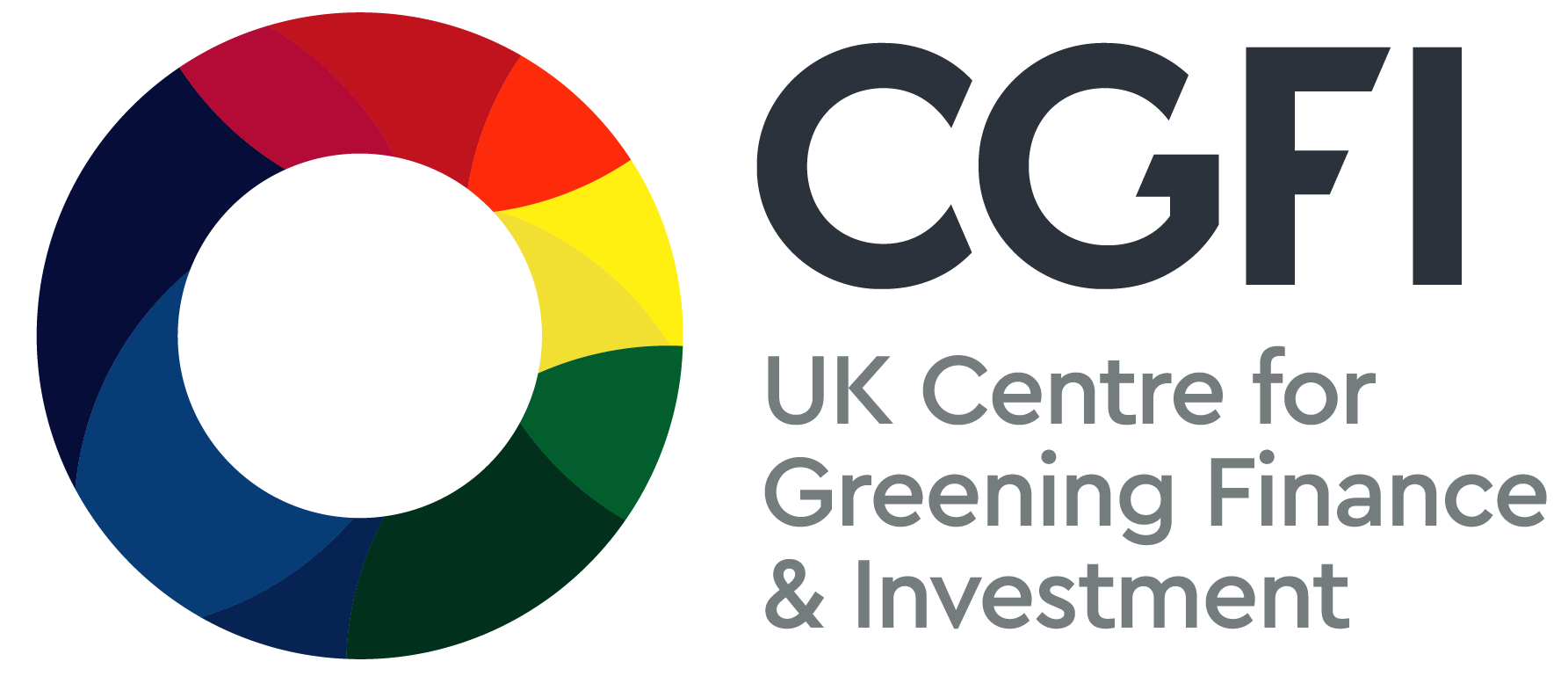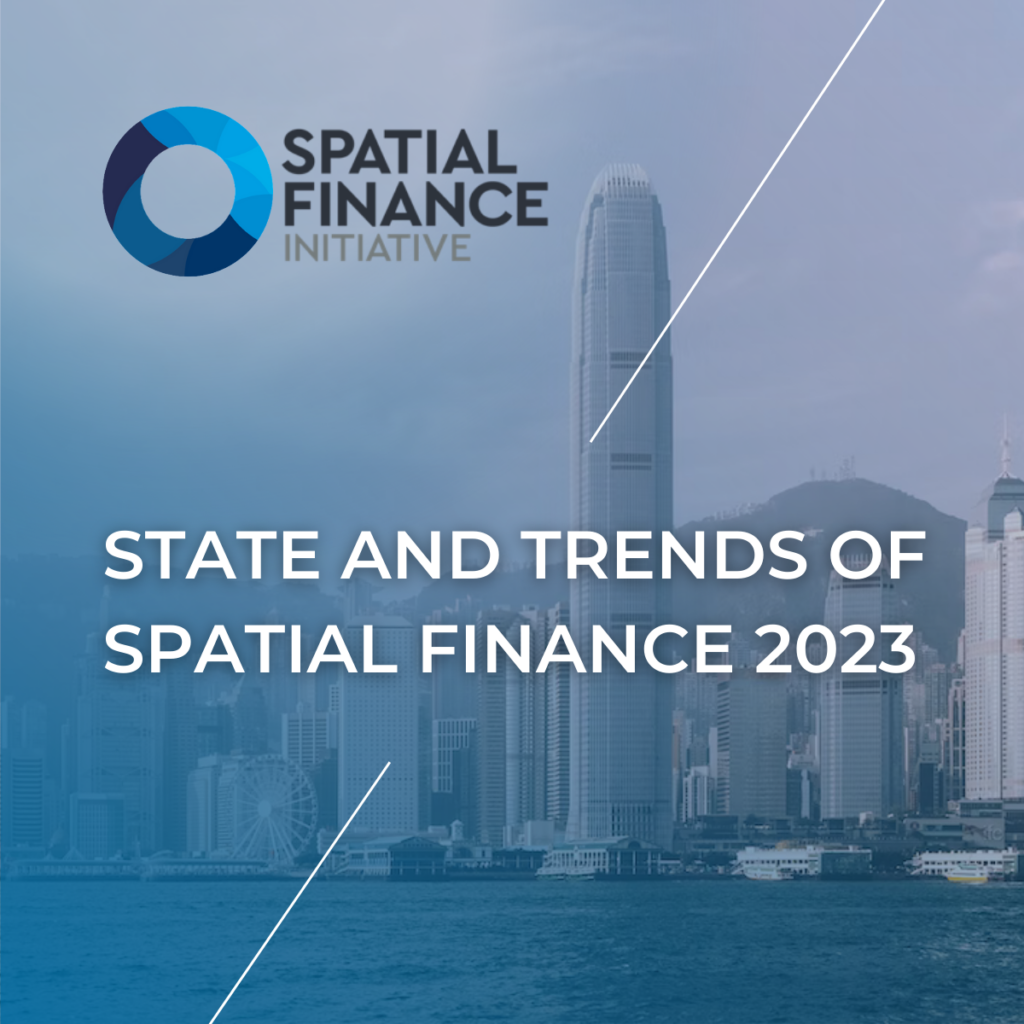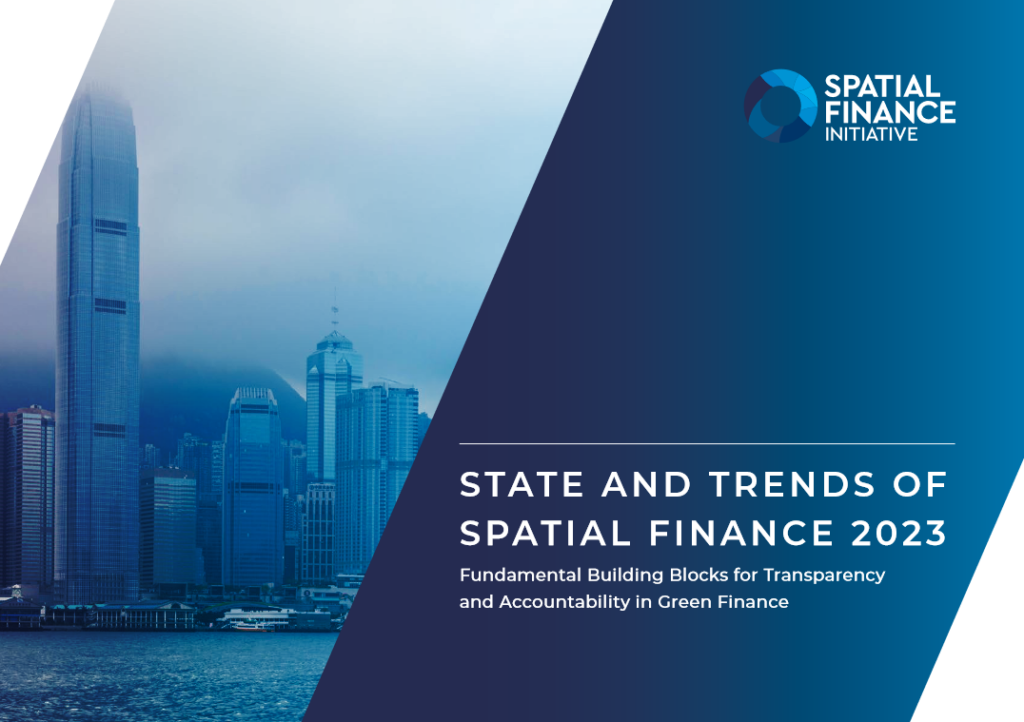Key Takeaways
– Technologies for capturing and processing geospatial data continue to improve.
– Policies and regulations around climate risk disclosures are driving demand for geospatial data and analytics.
– Solutions for assessing physical climate risks, monitoring outcomes in environmental markets, or understanding nature-related risks and impacts, are some of the fastest growing
application areas in spatial finance.
– Trends in green finance indicate strong potential for new and more spatial finance applications.
– These include: increasing demand for integrity in products and claims, financial institutions embracing the complexity of sustainability, and the need for more effective and impactful investor engagement.
Summary
This report is the Spatial Finance Initiative’s second overview report of spatial finance solutions and trends. It provides an update of both technical and market developments since the 2021 report, a deep dive into three application areas with significant growth potential, and an overview of trends that will shape the future of spatial finance.
The report will be of relevance to audiences across both the finance and geospatial communities. To practitioners at different levels within financial institutions, financial sector (data) intermediaries and professions. As well as to businesses, entrepreneurs and researchers across the climate and environmental science community and stakeholders across government, civil society and corporations.



